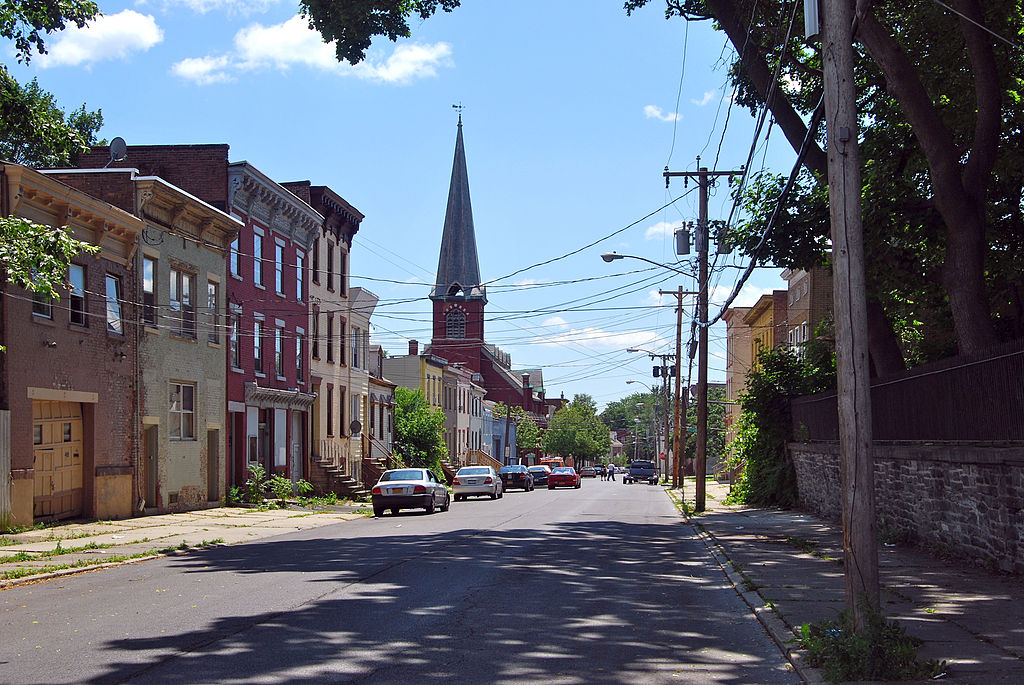By TIERNAN FOLEY
Contributing Writer
Ron “Cook” Barrett, gang prevention & education coordinator for Albany County, facilitated an illuminating lecture about street gang culture in the Touhey Forum, on Friday, Feb. 19, as part of a series of lectures hosted by the criminal justice department.
As Cook dissected the dangers of street gangs in the Albany area, the crowd watched with great excitement when Cook explained his philosophy behind preventing youngsters from entering a gang. It sprouts from a three-step approach: prevention, intervention, and suppression. Cook elaborated on how socioeconomic status correlates to gang culture, and how it is his job to prevent this from happening. However, he noted that the family is the biggest institution that needs to be amended, saying, “the most important unit in fighting crime is the family unit, not the police unit.”
However, gangs are becoming much more prevalent across the globe, and they are becoming a lot better at hiding it. Cook explained that people cannot assume anyone dressed in all red or blue is in a gang, because according to him, “real gangs move in silence.” The crowd watched in mounting dread and awe as Cook flipped through his slides, which showed how weapons are being camouflaged in everyday items.
Cook noted that corporate America wants to sell the “glamour of gang life” to make a profit, which is why they sell belts that can carry knives and hats that have secret compartments in them. Overall, the most shocking slide that Cook showed was a water gun that was carved out to mask a double-barrel shotgun. Jeff Perrotti, a sophomore criminal justice student, said, “It is ridiculously shocking if you think about it. It is dumbfounding to think that someone could hide something that dangerous.”
Cook noted that it isn’t just African-American and Latino people who make up a majority of street gangs, but white people as well. Anyone from the Hell’s Angels or the Skinheads can be just as dangerous. However, Cook shocked the crown even more when he made a comparison to fraternities and street gangs.
He vocalized the subtle, yet obvious rituals held by fraternities such as hazing, and juxtapositioned it to the violence committed by street gangs. Cook then recounted an argument that he had with a sorority sister at University at Albany. According to Cook, the sorority sister was very persistent in reminding him that her sorority participated in community service, but her argument has quickly debunked as Cook showed her a slide of the Hell’s Angels holding their own charity event.
Adjunct professor of criminal justice Bill Chapman said, “gangs are much more prevalent in communities than we know.” The migration of gangs throughout the United States has vastly grown, as most of them emerged in California, and made their way across the country, and populate big cities before making their way around the state.
“When New York City sneezes, Albany catches a cold,” said Cook. And once gangs make their way into the neighborhoods, then youngsters are subjected to the power of street gangs. Kids born into areas that are drug ring and homicide hot spots are more likely going to be enticed to join a gang, in order to be a part of what they view a glamorous lifestyle.
Associate professor Christina Lane said, “Issues come from the root of social problems, and crime is just a product of those issues.” The crime that inhabits low-income neighborhoods fosters gangs to become merely a self-fulfilling prophecy.
As part of Cook’s job, he travels to different schools to teach youngsters about the dangers of joining a street gang, in order to prevent a problem down the road. And since talking doesn’t necessarily solve every issue, Cook, along with his organization, has orchestrated a night called “Teen Night” in which teenagers who are subjected to the street life have a chance to escape, and come act as a teenager for the night. Cook pitched the event as a way for these teens to find a way to decompress and look toward role models, because according to Cook, “too many people are role players, and there aren’t enough role models.”
Cook works on many other projects with teens to teach them practical skills that act as an instrument to avert teens from the streets, such as teaching them how to play sports and to edit videos. Positive diversions seem to be the key to stopping these issues from emerging, because according to Cook, “Boredom is the devil’s advocate.”
Cook often looks to create new programs that aren’t yet available to tailor to the needs of the teenagers. His biggest piece of advice for these kids is “be yourself, or you will find yourself by yourself.”
Lane later said, “it moves me, what Cook does for the youth.” That is why she hopes to have him appear in some of her courses, not just an academic purpose, but hopefully to provide criminal justice students with a way to get involved in something so moving. “I want to get involved in these projects,” said Perrotti.
For more information to get involved, contact Cook at (518) 330-1885 or cookjule@covad.net.


